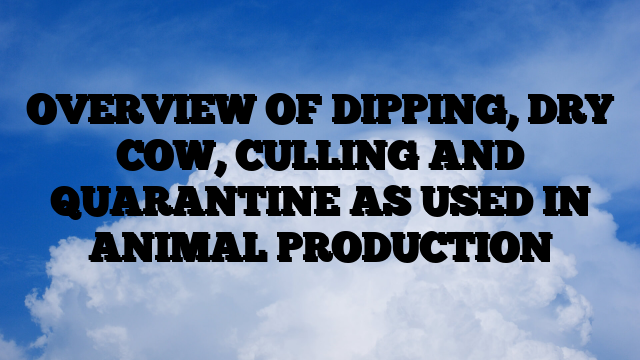1) Dipping
Dipping is a common practice in animal production that involves immersing animals, typically livestock, in a liquid solution or bath. The purpose of dipping is to control external parasites such as ticks, lice, fleas, and mites. The liquid used for dipping is usually an acaricide or insecticide solution that kills or repels these parasites. The animals are dipped into the solution, ensuring that the entire body is covered. This helps to eliminate or reduce the parasite burden on the animals, improving their overall health and productivity.
2) Dry Cow
In animal production, a dry cow refers to a female cow that is not currently producing milk. This period of non-lactation usually occurs towards the end of the gestation period, approximately two months before the expected calving date. During this time, the cow’s udder undergoes involution, which is the process of regressing and preparing for the next lactation cycle. The dry period allows the cow to rest and recover from the previous lactation while also preparing for the upcoming calving and subsequent milk production.
3) Culling
Culling is a management practice in animal production that involves removing certain individuals from a herd or flock based on specific criteria. Typically, culling is done to improve the overall quality and productivity of the population by eliminating animals that are deemed undesirable or unproductive. The criteria for culling may vary depending on the specific objectives of the operation but can include factors such as poor performance, genetic defects, health issues, age, or behavior. Culling helps to maintain a healthy and productive population by removing individuals that may negatively impact the herd or flock.
4) Quarantine
Quarantine is a preventive measure used in animal production to control the spread of infectious diseases. It involves isolating animals that have been exposed to a contagious disease or those suspected of carrying a disease. Quarantine periods can vary depending on the specific disease and can range from a few days to several weeks. During quarantine, animals are kept separate from the rest of the herd or flock to prevent the potential transmission of pathogens. This practice helps to protect the health and well-being of the entire population by minimizing the risk of disease spread.



